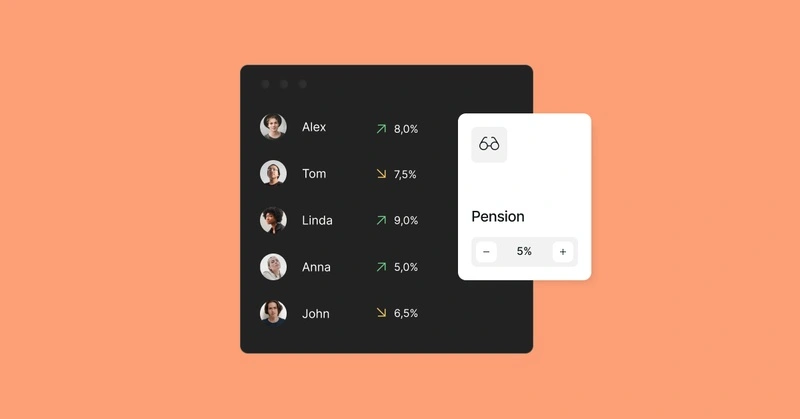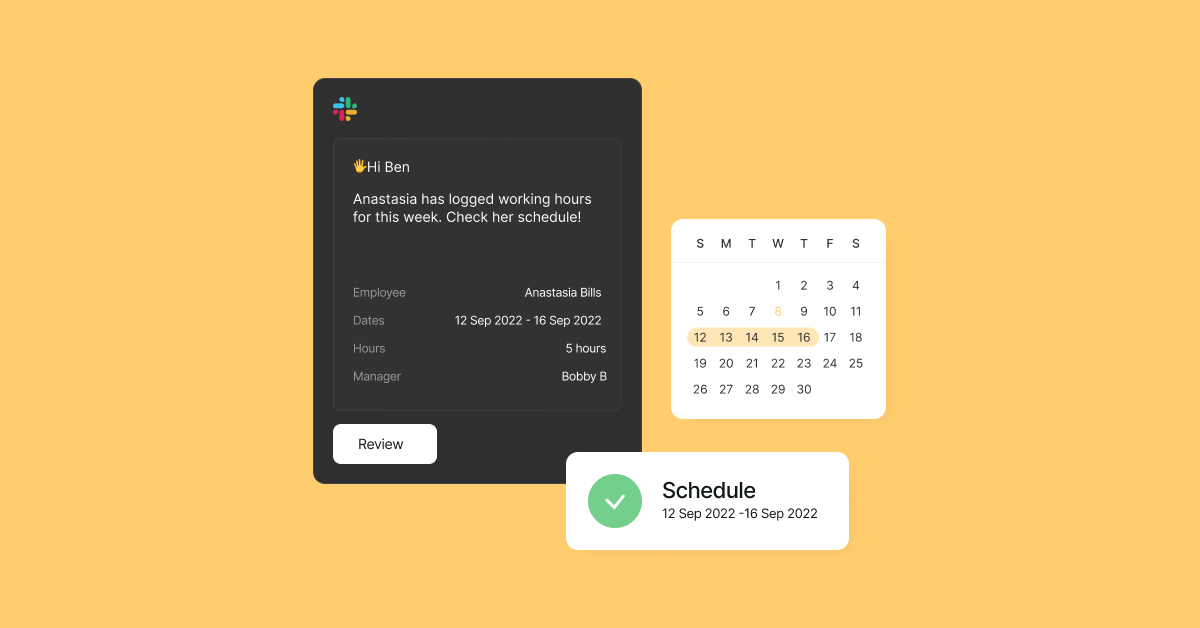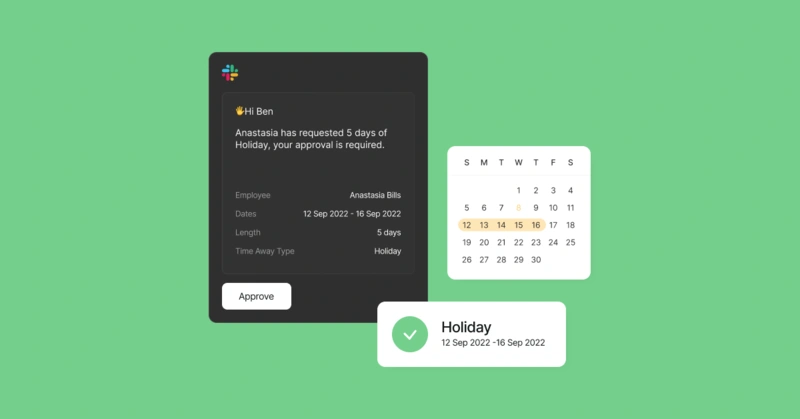Statutory Sick Pay Calculator for 2025/26
Use this SSP calculator (updated 21/04/2025) to calculate how much statutory sick pay you need to pay employees for the tax year 2025/26.
What is statutory sick pay?
Statutory sick pay is the legal minimum that employees in the UK are entitled to if they have been off sick for 4 or more days in a row. Eligible employees are entitled to up to 28 weeks of statutory sick pay, and the employer must pay it.
Use the employer’s guide to the types of leave to learn more about the different types of leave employees may be entitled to, and how they are remunerated.
How much is statutory sick pay?
Statutory sick pay is a flat rate of £118.75 weekly as of 6 April 2025 for employees working 7 days a week or fewer. There were no changes to the method for calculating Statutory Sick Pay nor to the minimum threshold required to be eligible for SSP (weekly earnings above £125)
How much is statutory sick pay per day?
The below table, which is taken from UK gov guidance gives a breakdown of how much statutory sick pay per day an employee is entitled to. The statutory sick pay calculator at the top of this page will help you calculate this.
| Unrounded daily rates | Number of qualifying days in a week | 1 day to pay | 2 days to pay | 3 days to pay | 4 days to pay | 5 days to pay | 6 days to pay | 7 days to pay |
|---|---|---|---|---|---|---|---|---|
| £16.97 | 7 | £16.97 | £33.93 | £50.90 | £67.86 | £84.83 | £101.79 | £118.75 |
| £19.80 | 6 | £19.80 | £39.59 | £59.38 | £79.17 | £98.96 | £118.75 | |
| £23.75 | 5 | £23.75 | £47.50 | £71.25 | £95 | £118.75 | ||
| £29.69 | 4 | £29.69 | £59.38 | £89.07 | £118.75 | |||
| £39.59 | 3 | £39.59 | £79.17 | £118.75 | ||||
| £59.38 | 2 | £59.38 | £118.75 | |||||
| £118.75 | 1 | £118.75 |
Who pays statutory sick pay?
Statutory sick pay is paid by employers as normal, through payroll. Statutory sick pay is also subject to PAYE and NI.
Glossary of terms used to calculate statutory sick pay (SSP)
Period of incapacity for work (PIW)
A period of sickness lasting 4 or more days in a row. Every day of sickness contributes towards the PIW, including
- Non-working days
- Weekends
- Bank holidays
Waiting days
Statutory sick pay is not payable for the first 3 qualifying days of a period of incapacity for work (PIW). These are referred to as waiting days and they may not always be the first 3 days of sickness leave since the employee may be sick on a non qualifying day e.g. a weekend.
Qualifying days
These are the working days that your employee normally works i.e. their contracted days. Qualifying days are the only days that you can use for both.
- Period of incapacity for work (PIW)
- Waiting days
Who is eligible for statutory sick pay (SSP)?
- An employee with an employment contract
- They have completed some work under this contract
- An employee who has been ill for 4 or more days in a row, known as a ‘period of incapacity for work’. This includes non-working days too
- An employee who earns at least £125 per week
- An employee who gives you notice and proof of illness when required
Who is not eligible for statutory sick pay (SSP)?
- An employee earning less than £125 per week
- An employee who has received the maximum amount of statutory sick pay (SSP)
- An employee who is receiving statutory maternity pay or allowance. There are unique rules that govern how this works pregnant women and new mothers
- An employee who is out of work due to a pregnancy related illness 4 weeks before the week that the baby is due
- An employee who was on strike or was being held in custody
- An employee who has received Employment and Support Allowance within 12 weeks before returning to work
Linked periods of sickness
If an employee has had regular periods of illness they may be classed as ‘linked’. To be linked the sick periods must:
- Have lasted 4 or more days
- Must be within 8 weeks of each other
Employees are no longer entitled to SSP if they have a continuous series of linked sick periods lasting 3 years.
Statutory sick pay for part-timers
As long as part time employees meet the eligibility criteria above they are entitled to statutory sick pay, regardless of whether they are full time or part time. This is a legal requirement for employers and could lead to employment tribunals if not calculated correctly.
Applying for statutory sick pay
Employees must tell their employers within the deadline set by the employer or within 7 days of becoming sick (if no deadline exists). If they don’t do this then employees may lose some of their statutory sick pay.
What can employees do if they’re not eligible for statutory sick pay (SSP) or it has ended?
Employees could be eligible for either Employment and Support Allowance (ESA) or Universal Credit.
When does an employee need to complete a statutory sick pay form?
An employee should complete a statutory sick pay form .
If an employee’s statutory sick pay (SSP) is ending then an employer must send them the SSP1 form either:
- within 7 days of the SSP ending
- on or before the beginning of the 23rd week, if their SSP is expected to end before their sickness does
If an employee does not qualify for statutory sick pay (SSP) the employer must send them the SSP1 form within 7 days of the employee going off sick.
Can I claim benefits while on statutory sick pay?
In certain situations it’s possible to be eligible for Statutory Sick Pay (SSP) and Universal Credit at the same time. If people qualify for both, their SSP payment will be taken into account when their universal credit payment is calculated.
Statutory sick pay self employed
If people are self employed, by default they won’t have an employer and are therefore not eligible to claim statutory sick pay. However, in this instance they may be eligible for employment and support allowance (ESA) ,which is for individuals who have a disability or health condition that affects how much they can work.
Self-employed statutory sick pay form
For individuals needing to apply for employment and support allowance (ESA), they can do so via gov.uk.
They’ll need:
- National Insurance number
- Bank account number and sort code
- Doctor’s details (name, address, telephone number)
- A sick note if they’ve not been able to work for more than 7 days in a row because of a disability or health condition
- Details around income, if working
- Details on when statutory sick pay ended, if applicable
Automate statutory sick pay (SSP) calculations in your payroll software
Modern payroll software should allow you to both calculate and pay statutory sick pay (SSP) to your employees, without needing to manually calculate yourself. This ultimately saves you time and more importantly ensures that your employees get paid correctly.
Take a look at our guide on how to choose the right payroll software for your business. Zelt is one of the best payroll software options in the UK and can help you stop making mistakes for free.
Calculate Sick Pay (SSP)
Step 1. Eligibility check
The calculator will ask whether the employee is currently receiving any other allowance such as maternity pay. As mentioned above, there are unique rules in these scenarios, which have to be followed.
Step 2. Does the employee have an irregular work schedule?
We recommend using this guide instead of our statutory sick pay calculator since it will require manual calculations instead.
*An irregular work schedule is where the employee doesn’t work a fixed number of days each week
Step 3. Input detail on the employee’s sick periods
Firstly, the first and last day that the employee was off sick during the most recent sick period, this should include any non working days or bank holidays.
Secondly, whether the employee was off sick within the previous 8 weeks. Employers should link periods of incapacity for work if the gap between the periods is 8 weeks (56 days) or fewer. This should then be treated as one period of incapacity for work for the purposes of any statutory sick pay calculations.
Step 4. Calculate the employee’s weekly average earnings
Remember that in order to be eligible for statutory sick pay (SSP) an employee must have average weekly earnings of £125 or more ( for 25/26) within a relevant period.
The end of relevant period is the last payday before the employee’s first sick day. The start of the relevant period is the day after the last payday at least 8 weeks prior to the end of the relevant period.
You will then need to input the gross amount paid within this relevant period as well as the employee’s working pattern. This is used in order for us to calculate the average weekly earnings (AWE) for the relevant period.
You will then be presented with a breakdown of the statutory sick pay (SSP) calculation for your employee.
Frequently Asked Questions
How much is SSP for 1 week?
£118.75 is the standard rate for the weekly Statutory Sick Pay (SSP) in the UK. If the employee is seriously ill and not able to work, this amount is paid by the employer for up 28 weeks.
How do you calculate SSP per day?
To calculate the exact SSP per day, you have to divide the weekly SSP rate by the number of qualifying days in a week.
What is the current SSP amount?
If you are seriously ill, the Statutory Sick Pay ( SSP ) you will receive per week is £118.75.
How much is Statutory Sick Pay?
Statutory Sick Pay ( SSP ) you can get is £118.75 per week if you’re too ill to work. It’s paid by your employer for up to 28 weeks.





